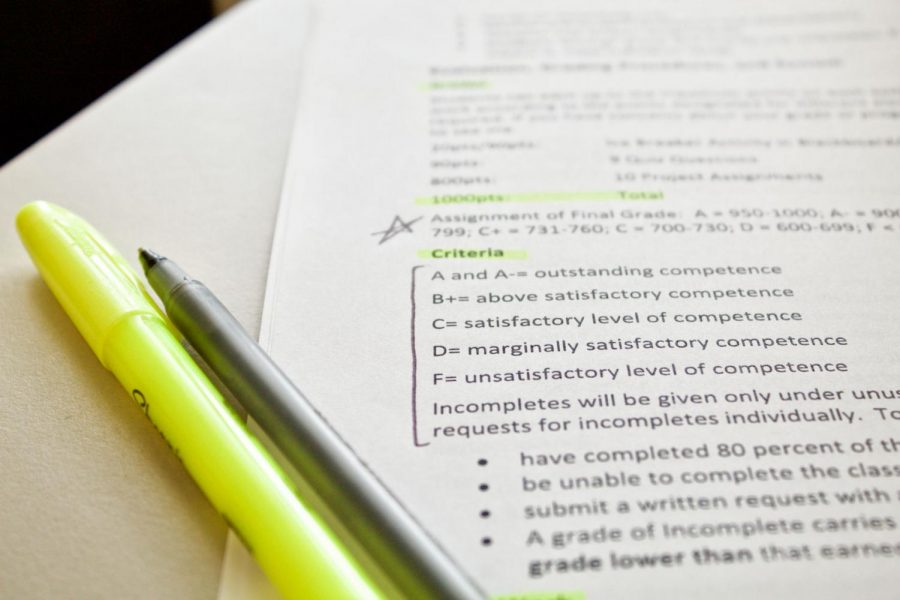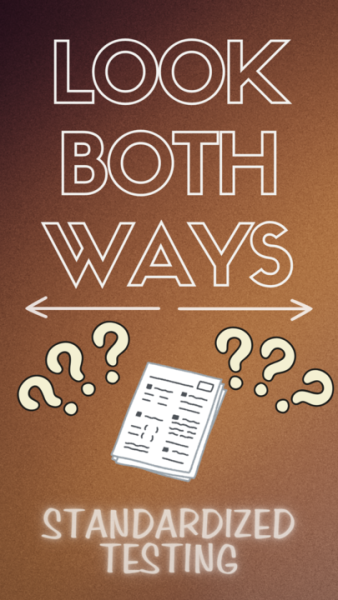Grading scales do not reflect student performance
September 16, 2019
There are two types of grading scales utilized by professors: the plus-minus grading scale and the traditional grading scale. The plus-minus scale is no more efficient than the traditional grading scale is. In fact, neither grading scale is entirely effective in determining potential success. Despite the nuances of this claim, there are clear costs in relying on these performance measurements.
There is a wide array of differing opinions on which of the two scales is better. For some students, the plus-minus grading scale may be more beneficial because it gives them the ability to increase their GPA by utilizing the plus and minus points.
“Students like it because they give you more grade points, and the perception that the GPA is really important,” associate professor of mathematics Joseph Stephen said. “Instead of getting a 3.0 for a B, if it’s a B+ you get a 3.3 and if it’s an A- you get a 3.6. Those fractional points seem to add up and make a difference to people.”
These fractional points can be added together to boost a student’s GPA. At the same time, other students argue that it costs them points.
“The plus-minus grading system is irrational due to its inclusion of an A- and the exclusion of an A+,” opined a Feb. 2015 Red and Black article. “Simply because a student received a 92.9 class grade does not mean he or she is a mediocre 3.70 student while a student with a 93 class grade is a superb 4.0 student.”
Regardless of these differences in preference, the path of knowledge acquisition and application within the classroom should be embraced as a journey to be enjoyed. Relying on rounded numbers and added points to determine student potential omits the other measures of student success, such as experience gained through internships and apprenticeships.
Furthermore, if such an emphasis is placed on GPA, it would make sense to have a consistent scale of grading for all professors across all departments within the university. However, grading scales differ for each professor depending on their preferences, and this convolutes the process of measuring performance.
“Grading is not this monolithic structure,” Stephen said. “In fact, two professors teaching the same course may have wildly different grading distributions, and then that becomes a problem for the college because they do want some consistency.”
Quickly glancing at the grade portion of your syllabus will yield the type of grading scale that will be used during the semester. The plus-minus grading system consists of A, A-, B+, B, B-, C+, C, C-, D and F. This system is contrasted by the traditional grading scale of A, B, C, D and F.
Despite the inadequacies of both grading systems, academic performance may open or close job opportunities for students seeking employment. Additionally, academic opportunities in graduate school are greatly affected by a student’s GPA.
While the plus-minus system may shed some light on academic performance and potential, this semi-subjective measurement tool does not paint a complete picture of student performance anymore than the traditional grading scale does.
“There are so many things that affect your future that aren’t GPA related,” Stephen said. “But we’re taught to be number-oriented, and every student wants a higher GPA. If [the plus-minus scale] is really telling you something or not depends on what you think grades tell you.”














